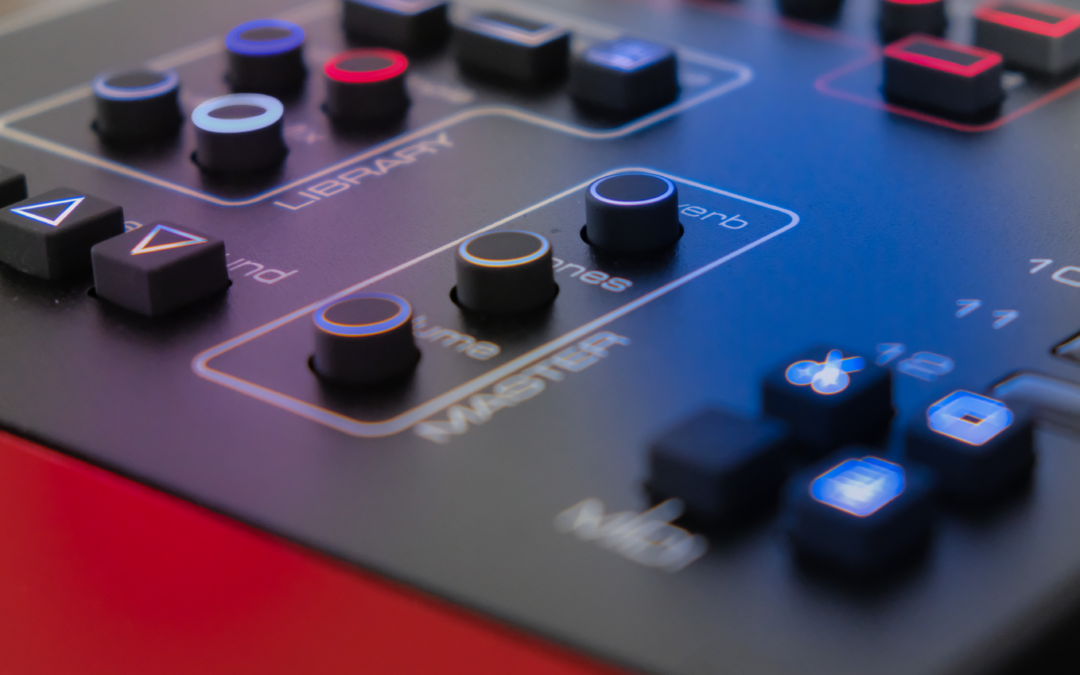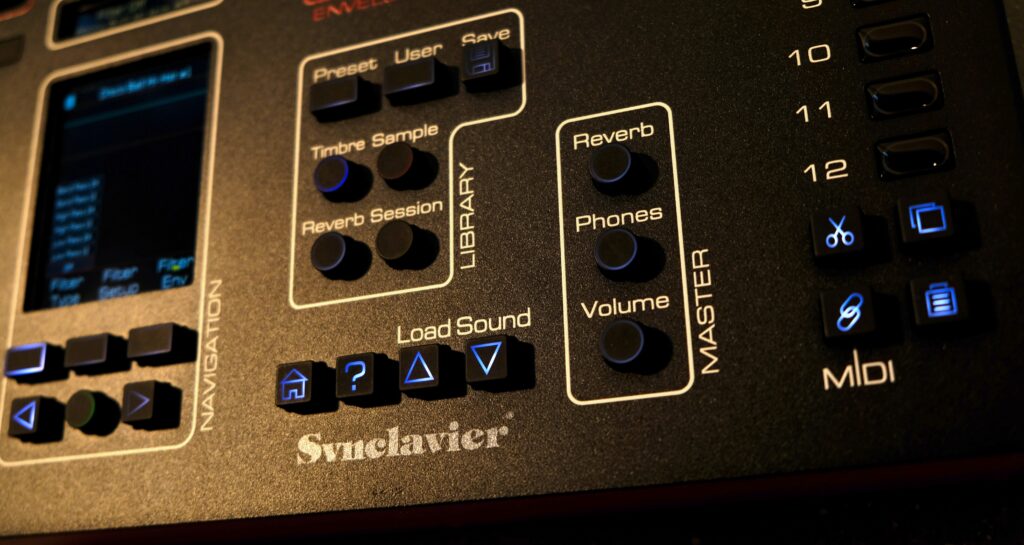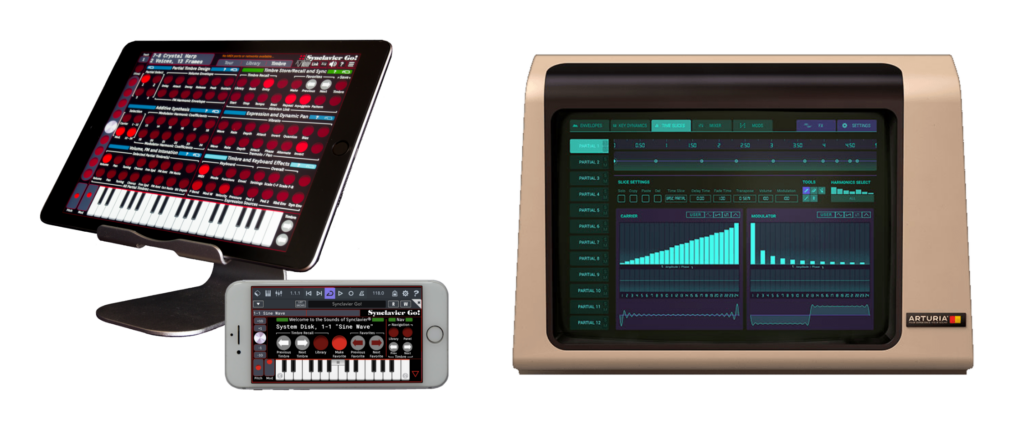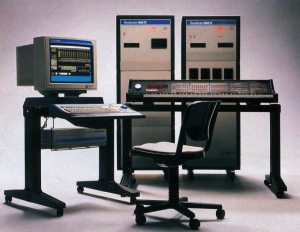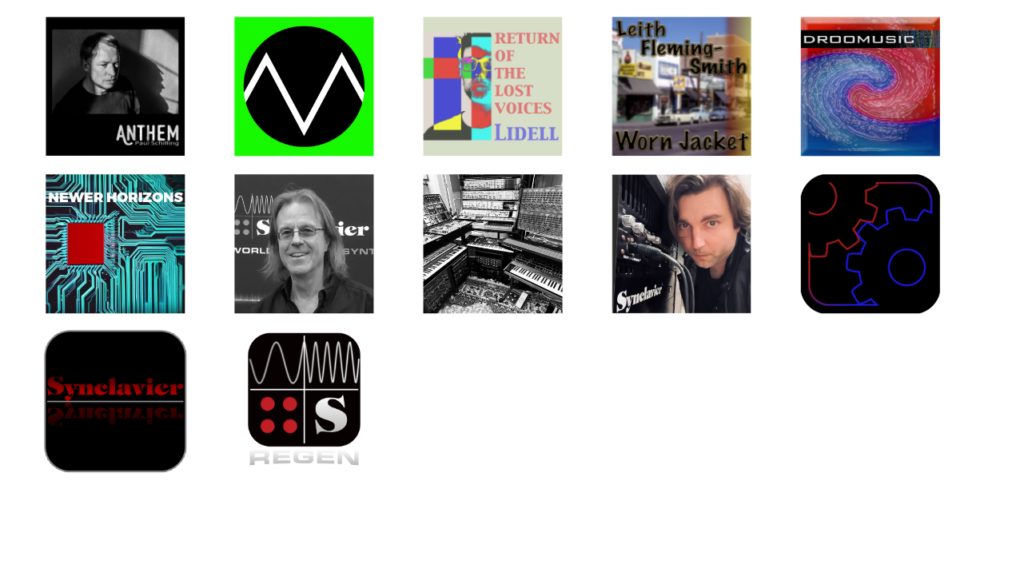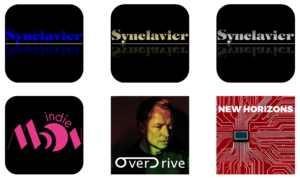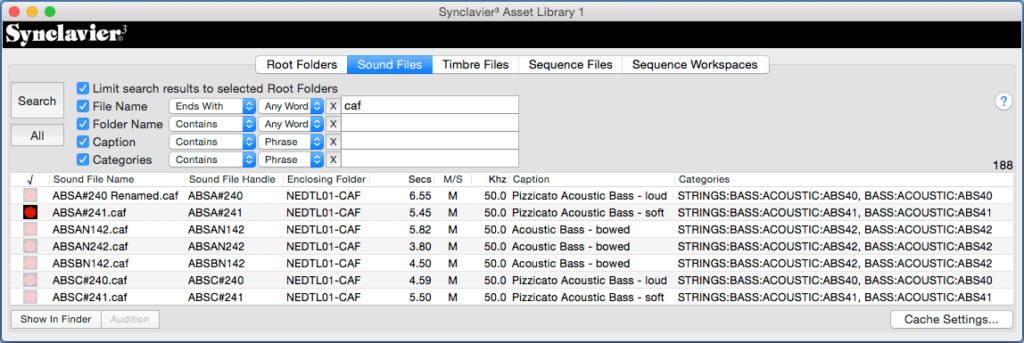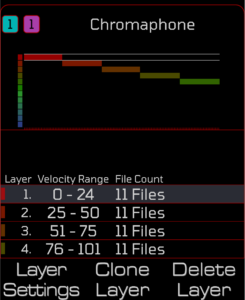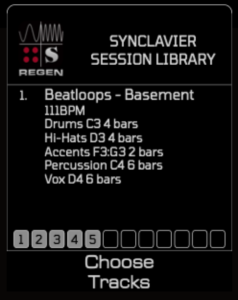When exploring a new synth, factory presets are the first thing you’ll likely encounter. Auditioning these sounds is how you’ll understand what it’s all about and what you can do with it. Some synths are strong for certain categories of sounds, some for others.
That’s one of the reasons we added the Load Sound buttons in a prominent position to Synclavier Regen: in a demo situation you can quickly load new presets for auditioning; these buttons will iterate through all the factory presets. Of course, by now there’s lots of Regen preset videos on youtube for you to get a taste of the beast.
A preset in Synclavier parlance is called a timbre. This is an entity that is called up to a track and played. Regen has its timbres organized in libraries, each library containing 8 banks of 8, a convention followed on from the original Synclavier II when timbres were saved to portable disks. The timbres are text files, they can be easily shared between users, modified by hand or a scripting language such as perl, and “ported” from earlier formats.
So a timbre could be ported from Synclavier V or Synclavier Go into Regen. You can even import timbres from your Synclavier II machine. How many synths today have that wealth of possibility? Timbres written over 40 years ago can be loaded up on a brand new desktop synth and sound and behave just like the original. Tastes change of course, but some of those early timbres are timeless, and some are just quirky or unique.
In recent months, we’ve supported A-list musicians in retrieving and porting sounds from their old disks so that they can tour with some of their older material more authentically without taking a huge Synclavier II rig with them.
So there’s a wealth of timbres out there, and with the breadth and depth of the Synclavier sound design engine, it does make sense to trade timbres and patches with others: each user might have their own way of approaching sound design; creating a pad sound, some might dial in a sawtooth using additive harmonics, whereas some might reach for the continuous sawtooth oscillator; creating a multi-patch, some might use the Partial Crossfader, others might use the patch list layers; to create an warping sound, some might map an envelope to tuning, others might use frames; and so it goes on.
Having good factory content is how we show-off the amazing depth of sound design possibilities. When Regen was launched, we did two things: we commissioned professional sound designers to create modern sounds using some of the new-to-Synclavier features (reverb, super-saws, filters, and so on); and we curated a selection from the wealth of sounds in the NED and Synclavier archives.
We occasionally add built-in factory content via firmware updates, but as of writing, we have this for built-in factory content:
- 510 timbres
- 2064 samples
- 83 sessions
- 19 reverbs
The NED & Synclavier archive is huge, so we had to carefully pick the most useable sounds for Regen. Timbres such as “The Whistle” are still as visceral today as the day the day they were created — so much eerie emotion can be wrung from this whistle preset in the right pair of hands. Those immediately useable sounds made it into the “Regen Warehouse” library. Sounds that were more niche, but still an important part of the Synclavier legacy, such as “Anvil” and “Rain” were put into the “Legacy” libraries. These three libraries can be downloaded for free on the Regen download page, put on an SD card, and loaded into Regen.
As of writing, there are 3 legacy libraries and 4 artist libraries that you can download for free, amounting to 282 timbres and 28 samples. As occasion arises, we will add more downloads here. If you’ve created a library that you want to share, please do get in touch.
And if you’re more interested in the legacy sounds, you should also check out the libraries of Kevin E Maloney and Gary Chang included in Regen. They were (and still are) power users of Synclavier systems and created libraries for us from original timbres they used on movie soundtracks and hit records. Also in their libraries are legacy samples from the NED days, many of them still emminently useable.
You might hear some of these power users talk about patches. That’s a particular type of timbre that uses multiple samples as its sound source. Back in the day, you could purchase sample libraries from the likes of Prosonus that were created as after-market material for the Synclavier PMST. They contained many samples of varying notes that could be mapped (or patched) to keys or key ranges for a more authentic recreation of an instrument. Many were orchestral, such as clarinets, violins, cellos, harpsichords, and so on. Many more owners brewed their own.
They sampled drum kits, or made playable pitch-able timbres from objects such as wine glasses or salt shakers, and created patches from their monophonic analog synths so they could play them polyphonically on their Synclavier and add FM effects.
Now, with Regen, you have two dimensions of patching. So, if you’re sampling an instrument such as a clavinet that responds differently depending on how hard you strike a key, you can sample different hardnesses for each key and put those samples into Regen. Regen will pick the correct sample for playback based on the incoming note and velocity information from MIDI. And if that sounds like a lot of work, Regen understands soundfont .SF2 files, so you have access to a ton of multi-sampled instruments out in the wild that others have created and shared. And naturally, there’s some good multi-sampled instruments included in the factory content: just search for #multi in the tags and Regen will show you all of them from across its libraries.
So what’s this about sessions? A session is also a kind of preset…for the whole system state. Consider it like a project. You can save your timbres on all 12 tracks with track volumes, CC mappings from all external MIDI, a loaded .mid file – in short, everything you’ve been working on on your Regen. Sessions are saved in a Sessions/ folder on your SD Card, but can be moved to a library folder if that better suits how you organise projects.
Regards factory content, there are four categories of included sessions in Synclavier Regen:
- Mixes serve as examples of projects, containing many tracks with different timbres that go well together. E.g., percussion on track 1, bass on track 2, lead on track 3. Each track accepts MIDI from the corresponding MIDI channel number.
- Beatloops are like Mixes, but are arranged to a specific tempo. They are looped samples that are meant to be played live. The samples are mapped to keys and will loop for N number of bars, or until they’re “choked” by the choke key. You have percussion, drones, accompany parts, and they can be used as the foundation of a track or for inspiration, similar to the loops found in DAWs such as Ableton Live. With Beatloops, check the description for note mapping info.
- Splits are several timbres split across the keyboard. For example, Anthony Marinelli’s “Two Guys” has an FM Piano on the bass half of the keyboard and a Flute with The Whistle on the treble half.
- Stacks are as the name suggests: several timbres are stacked together to make a complex sound. Sometimes a happy accident can make you realise that two sounds go really well together. Because Regen is multi-timbral, you can simply load these timbres onto separate tracks and have them triggered together. In some of the included stacks the timbres loaded are then filtered with the track filter or note filter, so they don’t step on each other acoustically. With the processing power of Regen you can have many timbres sound at once, all with different filtering. There is a limit to how many notes can be played at once, and how many samples can be loaded in one session, but in most cases, you will not get close to this limit.
I think that covers most of the basics of presets with special reference to Synclavier Regen. I hope you get a chance to experience a Regen and dive into some of the excellent factory content or make your own.

